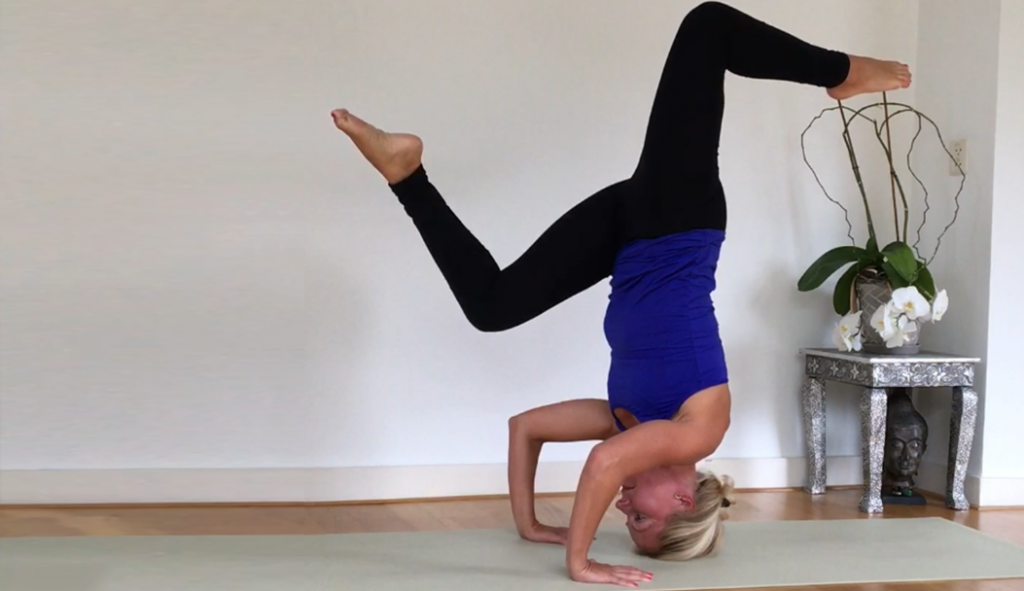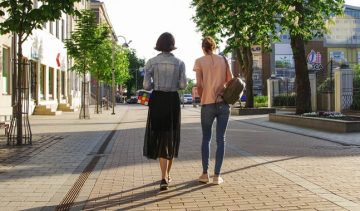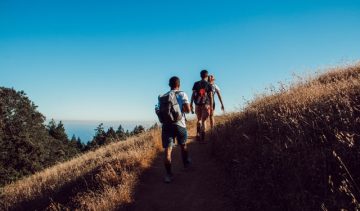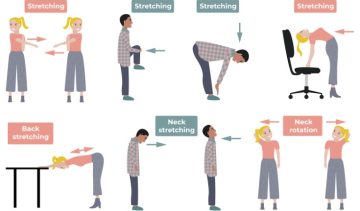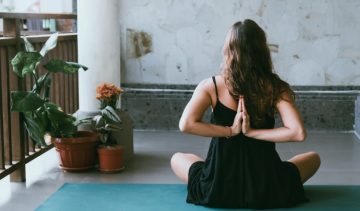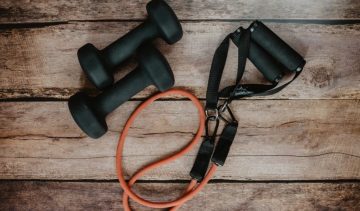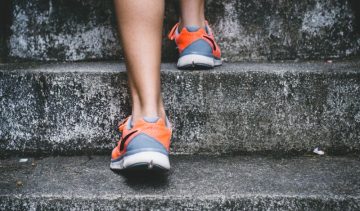If you look at the photo, you might think that you are going to break your neck in this yoga pose. But nothing is further from the truth: everyone can do the Headstand. And when you do this asana regularly, it offers many health benefits. Scientific research shows that doing a reversed posture such as the Headstand increases brain activity by 14%. Just like the ability to concentrate better and in addition, it slows down the aging process. But how exactly does that work? In this blog post I will explain the effects of the Headstand and I will include a step-by-step guide on how you can do this pose with ease.
What is the Headstand?
This is a pose for advanced students: a reversed posture with arm support. In yoga jargon this pose is called “Salamba Shirshasana”. Shirshasana stands for ‘head’ and Salamba for ‘support by arm’. Often this asana is only called Shirshasana. In order to raise the body, the buttocks, thigh-, arm- and abdominal muscles are particularly active. Falling over can definitely happen in this pose. When doing this pose, make sure you do it on a soft surface or a wall to which you can rest against.
What are the effects of the Headstand?
This asana has many advantages when you do it regularly. Because the body is reversed, the blood pressure in your head, neck, shoulders, veins, blood vessels, lungs and legs also changes. The muscles and tissues in the body are activated to be able to stay in the posture. There is more oxygen in your head, which causes 14% more brain activity. This improves focus and prevents depression and anxiety. In addition, a reversed pose has a positive effect on the aging process of the body. It improves the overall body posture and especially strengthens the muscles in the back, shoulders, arms and abdomen. The Headstand also has a positive effect on the immune system and naturally enhances digestion. In short, this asana had a long list of health benefits.
This is how you do the Headstand
It is best to start from the Child pose. Remain a few breaths in this asana, until the body feels completely relaxed. Then put your hands on the mat and place the top of the head on the mat. It is important to place the hands well at a 90 degree angle where the fingers point towards the face and the fingers are spread for more grip. Stretch the legs and place the toes onto the mat. When you do this, there is automatically more pressure on the head and neck. Give yourself a few breaths to get used to this feeling. When you are ready, bring the knees to the chest one by one and the feet come off the ground. Stay in this position for a moment, check your breathing and then stretch out the legs at ease. Tighten the abdominal and buttocks muscles to remain more stable.
Alternatives
When the abdominal muscles are not trained enough, it can be difficult to bring the knees towards the chest. Alternatively, you can first let the knees rest on the forearms one by one. Left knee on left forearm, right knee on right forearm. Only when it feels stable and you have your breathing under control, you can first stretch one leg and then the next leg. When the Child Posture does not feel comfortable to do, an alternative is somersaulting before doing the Headstand.
The most important thing in the Headstand is doing what feels good for your body. Respect the limits that the body indicates and do not go over it. And as for so many things: if you practice regularly, it’s will get easier every single time.
